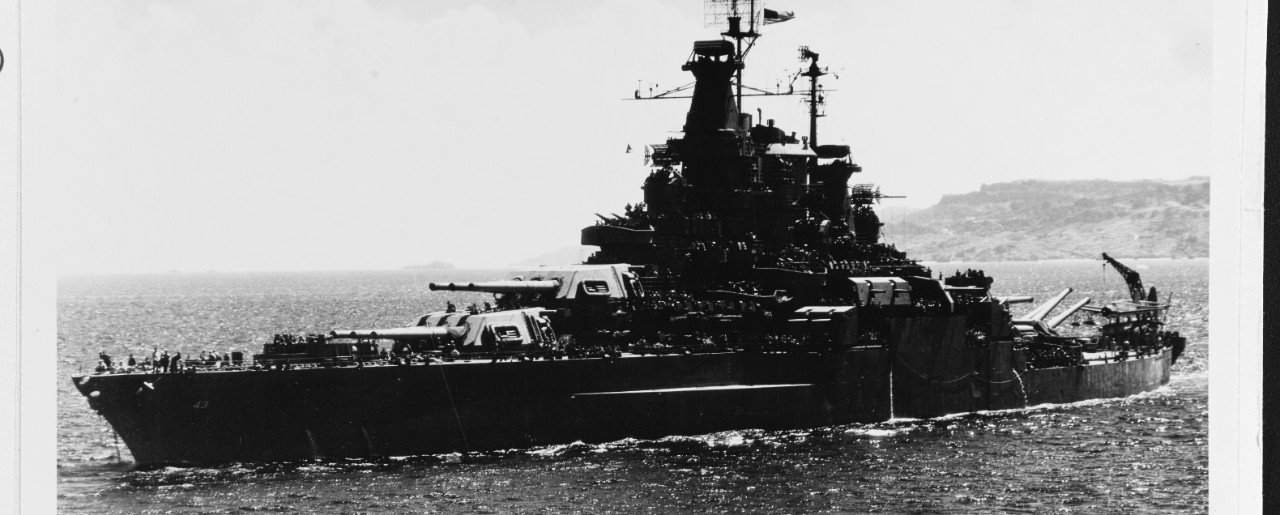USS Tennessee, a 32,300-ton battleship, was built at the New York Navy Yard. Commissioned in June 1920, she operated in the Atlantic area for a year and then transferred to the U.S. Pacific coast, where she was based for nearly two decades. As a unit of the Battleship Force, she participated in regular training and fleet exercises, winning the "E" for excellence in gunnery during the mid-1920s. In 1925, Tennessee transited the Pacific to visit New Zealand and Australia. With tensions with Japan rising, her base was moved forward to Pearl Harbor in 1940.
On 7 December 1941, Tennessee was one of eight battleships present when the Japanese attacked Pearl Harbor. Moored inboard of USS West Virginia (BB-48), she was hit by two bombs, which damaged two of her four gun turrets, and was scorched by burning oil from the sunken USS Arizona. In late December, after temporary repairs, Tennessee steamed to the Puget Sound Navy Yard, Washington, for an overhaul. From February through August 1942, she operated off the U.S. west coast, then briefly went to Pearl Harbor before returning to Puget Sound for extensive modernization.
With her appearance completely changed and her weapons, combat systems and protection considerably enhanced, Tennessee emerged from the shipyard in May 1943. She almost immediately moved up to the Aleutians area, where her 14-inch guns bombarded Kiska when that island was invaded in August. During the next year, from November 1943 into September 1944, she participated in bombardments of Tarawa, Kwajalein, Eniwetok, New Ireland, Saipan (where she was damaged by Japanese counter-fire), Guam, Tinian, Anguar and Pelieu. In October, Tennessee's guns pounded the Leyte invasion area as U.S. forces returned to the Philippines, and, on the night of 24-25 October, she helped sink the Japanese battleship Yamashiro in the Battle of Surigao Strait.
After a Stateside overhaul, Tennessee supported the Iwo Jima operation in February and March 1945, firing nearly 1400 fourteen-inch and over 6000 five-inch shells at targets on the small, but fiercely defended island. Beginning in late March, she bombarded Okinawa. Hit by a suicide plane on 12 April, Tennessee remained in action until 1 May, when she went to Ulithi for repairs, then returned to Okinawa to continue her gunfire support during June. In July and August, she operated in the waters off China. Following Japan's surrender, the battleship took part in the occupation effort before returning to the United States via the Cape of Good Hope, arriving at the Philadelphia Navy Yard, Pennsylvania, early December 1946. Through the next year, she underwent the "mothballing" process and was decommissioned in February 1947. USS Tennessee was part of the Atlantic Reserve Fleet for twelve more years and was sold for scrapping in July 1959.



